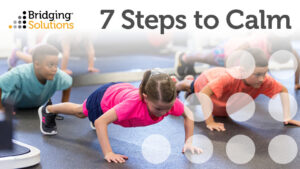The Story of Your Life: Micromovements Tell It All!
Micromovements and the stories they reveal …
Your movements tell your story
One of the primary principles in the Bridging® Technique is to analyze a set of passive movements where we do the moving, not you.
These movements tell the story of how your body is actually getting you through the day. When we find a glitch, hitch, or skip, it is usually the source of your pain, weakness, and poor coordination.
It’s common to forget some parts of the body’s story
Although you may not have remembered a past trauma, your body does. The forgotten events play a role in the pain and movement concerns you have.
Funny enough, so many clients remember yet another traumatic event once we find an area with poor micromovement. Some of the traumas didn’t even seem so serious at the time.
These are sample of client’s forgotten traumatic events:
- A broken wrist from a major bike fall
- Open heart surgery
- Rolled car accident and rescue
- Fractured shoulder/clavicle from falling off the roof
The gentle Bridging movements we use act like a magic eraser to clear up the glitch, hitch, or skip caused by these traumas, allowing you to move more confidently and feel better.
Do your micromovements create a complete picture?
 Like a connect-the-dots picture, the interconnectedness of your movement system becomes evident as we check very simple movements.
Like a connect-the-dots picture, the interconnectedness of your movement system becomes evident as we check very simple movements.
These clues can be so basic you rarely give them a second thought, but we do. Some examples:
- Does each leg feel like it weighs the same, when we lift it?
- Does each leg roll fluidly and equally, when we roll it?
- Does each arm lift as easily, when we lift it?
- Does each arm wiggle as freely, when we wiggle it?
- Does the core roll to the right as easily as the left, when we roll you?
These are not indicators of right and wrong. They are indicators of interconnectedness and stress zones. When micromovements are working well, there is a lightness, fluidity, and ease of movement flow between parts of the body.
What clues does your body provide?
Your long-forgotten traumas can be still be visible in the more nuanced aspects of the micromovements. These traumas can still be impacting your day-to-day function, even though they occurred years ago.
Characteristics we tune into include:
- Does a movement flow with smooth timing and sequencing?
- Are transitions smooth and correct depending upon the position and the task? (flexed or extended, turning or straight, etc.)
- Do muscle groups take turns when they are supposed to, so they don’t become overworked (modulate)?
Being able to read these clues lets us get your movements back on track for less pain, better movement, or continued development for a child.
As a reminder, Kinetic Konnections is transforming into The Bridging Institute
After 15 years we’re moving into our next phase with a new name and more tightly focused mission–helping more people, in more ways.
Our goal at The Bridging Institute remains keeping your body’s micromovements optimally organized to self-regulate, focus and be active for the things you enjoy in life.
Did you see our news?
 Kicks off in one week!
Kicks off in one week!
The Bridging Basics education course is designed for professionals to learn how to assess micromovements and reorganize the body to make fast, sustainable changes. A powerful tool to add to your professional toolbox!
The 2021 cohort kicks off Feb 26th. Here is the Bridging Basics 2021 Course Info.
Bridging Solutions
For parents, our first online program, 7 Steps to Calm, is set to debut in March.
This is our first on-demand program, with more to come, featuring a guided structure of movements for you to do at home to help your little ones.
The Bridging Institute
After 15 years we’re moving into our next phase. The Bridging Institute name and identity will be replacing Kinetic Konnections over the next few months.



